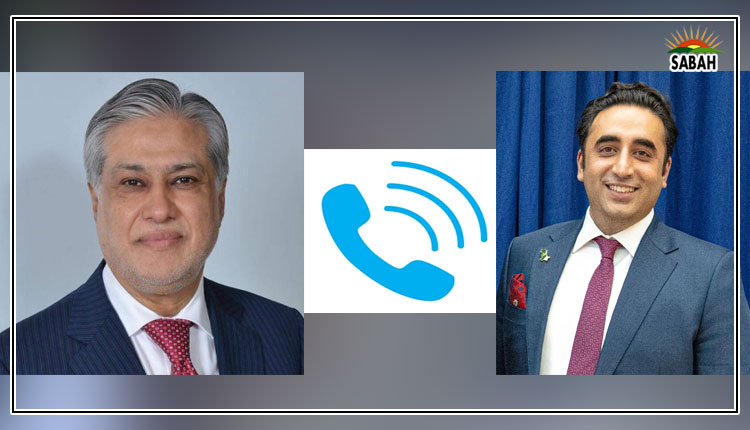ChatGPT: the future is already here…Dr Ayesha Razzaque
The year 2001 saw the release of Steven Spielbergs film A.I. – Artificial Intelligence. It was accompanied by a website featuring a chatbot, a program that mimicked a human being for people to chat with. It was not very good at it because, a few exchanges in, it would start responding with nonsense but it was an impressive feat for the time nevertheless.
In 2005, the Massachusetts Institute of Technologys Computer Science and AI lab released SCIgen, an online tool that produces computer science research papers for any user-supplied author names. The papers were properly formatted and structured, complete with graphs and figures but text that, while grammatically correct, was nonsense.
That was fine because the purpose of SCIgen was not for the papers to make sense, but to submit the grammatically correct gibberish they produced to academic conferences in computer science and see whether they passed their review process. SCIgen made headlines when a paper it produced was submitted to and accepted by the World Multiconference on Systemics, Cybernetics and Informatics 2005 (WMSCI05). The SCIgen paper would not have made it into the conference had any English speaker with basic computer science knowledge reviewed it.
The development of conversational AI chatbots is largely driven by interest from businesses. In recent years, businesses have been reducing the number of human phone and online customer support staff and replacing them, for simple requests at least, with chatbots of varying levels of ability. Chatbots can work 24×7 year-round and do not require vacations, wage increases, union negotiations, medical coverage, or office premises, and can yield enormous savings.
On November 30 last year, two decades after the chatbot accompanying the release of Spielbergs film, OpenAI (of DALL-E image generator fame) announced the release of ChatGPT-3 (GPT-3 stands for Generative Pretrained Transformer version 3). ChatGPT is an impressive chatbot built on the GPT-3 language model. It is a quantum leap from the chatbot from 2001. It is capable of responding to complex text prompts with pages of text if required.
In December, early users began posting impressive responses to prompts produced by ChatGPT in seconds that a human being might take hours or days to come up with. As such, many observers consider it to have passed the Turing test. The Turing test is named for Alan Turing and determines if an artificial intelligence is advanced enough to produce responses to fool a person into appearing human. If one had to describe ChatGPT to someone from the pre-computer days, one might describe it as an oracle.
ChatGPT is not perfect (yet!). Like all machine learning systems, it is trained on a huge dataset from the Internet, articles and books. That means it is only aware of things and events covered in the data it was trained on, which means there is a cutoff date of events it is aware of. That knowledge cutoff date is September 2021. Even then, ChatGPT is not perfect it is often tripped up by freshmen-level questions of (mathematical) logic.
Putting a tool like this in the hands of the public, you can bet people will find entertaining uses for it generating poetry and song lyrics, writing fictional stories and dialogue for characters in books, movies, and TV shows, creating fake quotes and speeches for historical figures, chatting with people in a variety of creative and humorous ways, creating madlibs and other word games, generating jokes and puns, creating fake news articles and social media posts, etc. This preceding list of uses was produced by ChatGPT when I prompted it. More serious applications people have put it to use include developing business plans for specific ventures and regions in the world, creating research summaries, translation, writing and debugging code, etc.
In the context of education, students have praised ChatGPT for its potential to serve as a personal tutor with infinite patience with an interface much simpler than regular search engines.
Does that mean ChatGPT is about to replace the Googles, Bings and DuckDuckGos of the world? Not quite yet. OpenAI had to throttle access to ChatGPT due to, as expected, huge demand. The exact cost of generating a response by ChatGPT is not known but some educated back-of-the-envelope calculations estimate it at between $1.5-8 million per month in terms of energy costs alone even at this very limited release stage.
As an aside, take note of the enormous investment it took to develop and (post-development) run a generative model like ChatGPT and contrast that with the meager resources that a country like ours can dedicate to academic, public, and private sector research. Many (but not all) local investors demand profitability from startups in 24 months or less. And while a lot of ChatGPTs applications may seem obvious, OpenAI is proceeding with deliberate speed even if its project has not turned a profit (yet). That is why promises by some planners in Pakistan of creating the next big-tech company are likely to remain just that, for the foreseeable future at least.
In the context of education, in addition to serving as a personal tutor capable of answering complex questions, ChatGPT is able to return summaries on topics, saving research assistants significant time. Very significantly, it is able to produce very detailed essays on virtually any question, even with proper citations if so requested. Its quality of writing is at the level of a good college student.
Beyond essay questions, it is able to answer many mathematical questions. A faculty member I talked to shared how ChatGPT was able to answer final exam questions from a math course of an MSc programme in artificial intelligence and machine learning well enough to justify full credit. However, as I mentioned above, on other types of math questions it still fails rather spectacularly. There are also reports floating around that ChatGPT has passed several professional medical and other exams.
That is the immediate problem educators in schools, colleges and universities are faced with: ChatGPT is able to produce something as extensive as term papers that students are meant to work on for weeks and months in a matter of seconds. How can teachers tell apart an original piece of work by the student from a product of ChatGPT?
Some situations might allow students to attempt writing assessments in a supervised, exam-like setting where access to the internet is controlled. However, class sizes at some universities in the world can run into more than a thousand students where that is no longer an option.
Identifying ChatGPT responses is not as straightforward as detecting plagiarism the way many online text similarity tools do. This is a serious problem and one thing being discussed in technical circles is how it might be possible to hide a signature in ChatGPTs responses that could make it possible to identify them as such (even after editing).
Is ChatGPT good enough for entertainment purposes? Certainly! Is it a useful tool for someone doing serious work or research? Yes, it can be a great time-saving assistant as long as the user is capable of verifying its product – it still requires the user to have expertise. It is certainly good enough to replace a lot of content writers churning out (banal) blog posts by the pages. Can people trust ChatGPT enough to blindly put their lives in its hands? Certainly not or at least not yet. Does that mean ChatGPT is not good enough for prime-time yet? Not at all.
Today, we may still have to line up to use ChatGPT but that is changing fast. A few days ago, Microsoft announced a $10 billion investment in OpenAI, further deepening their relationship, integration of ChatGPT in its Azure cloud services making it available as a service. The latter promises to give developers the ability to enhance their existing services and products with ChatGPTs abilities or build entirely new ones.
And ChatGPT is not the only AI chatbot around. Google has developed the LaMDA chatbot which made headlines last year when a software engineer with Googles responsible AI organization described it as sentient.
Conversational AIs are here and likely to stay. Anyone who has a job because their sole skill is composing generic blog posts to fill a quota or write decent emails needs to upskill and fast. I will let ChatGPT conclude this op-ed:
In conclusion, the development of advanced conversational AI systems like ChatGPT, is a testament to the rapid advancement of technology and its ability to transform the way we work. While it is true that such technology may displace some jobs, it also has the potential to create new opportunities and improve efficiency in various industries. However, it is important to recognize the need for proper implementation and regulation to ensure that these systems are used ethically and responsibly.
As we continue to see the integration of conversational AI in more areas of our lives, it is essential that we consider the potential impact on the future of work and take steps to mitigate any negative effects while embracing the positive ones. The future of work is likely to be shaped by the integration of AI, and it is important that we are prepared for the changes to come.
Courtesy The News












